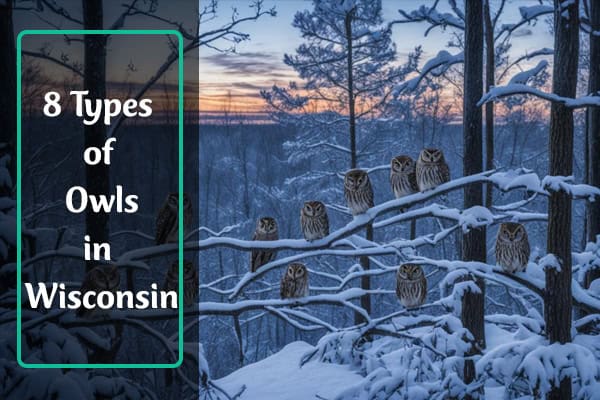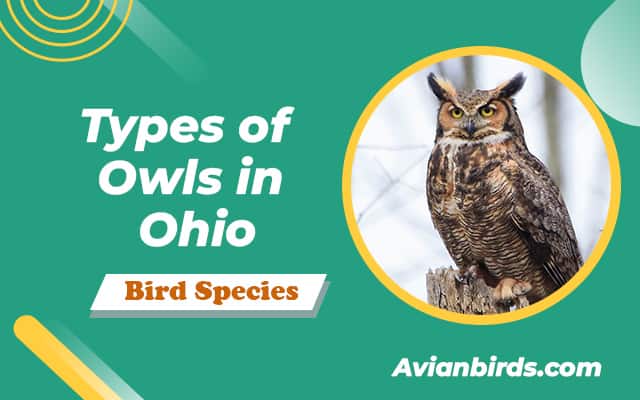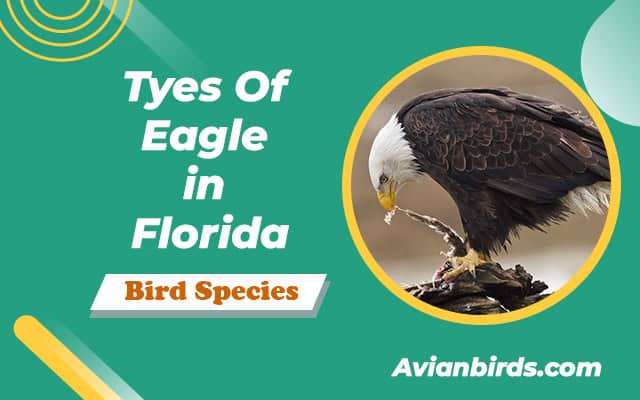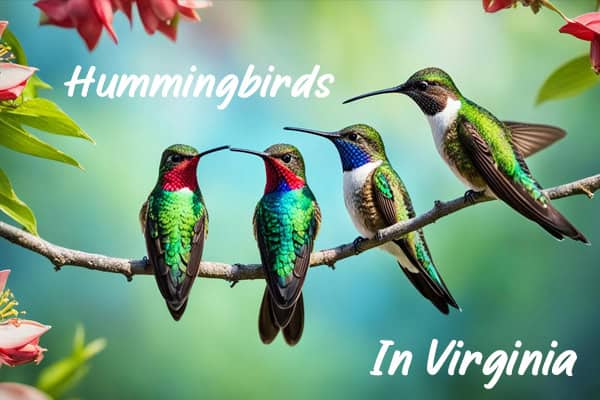11 Types Of Owls in Wisconsin (With Pictures)
Did you know Wisconsin is a hotspot for owls, hosting 11 out of 19 owl species in the U.S.? This makes it a prime spot for these fascinating birds. From the large Great great-horned owl to the small Eastern screech owl, Wisconsin’s owl diversity is impressive. We’ll dive into the unique traits, habitats, and behaviors of these 11 owl species. You’ll learn about these amazing birds and where to see them in the wild.
Owls in Wisconsin
Wisconsin is a great place for owls, with 11 out of 19 owl species in the U.S. living here. You can find everything from the well-known Great Horned Owl to the rare Boreal Owl. Each owl has its own special traits and ways of living.
Overview of the 11 Owl Species
The 11 owl species in Wisconsin are:
- Great Horned Owl
- American Barn Owl
- Barred Owl
- Eastern Screech Owl
- Long-eared Owl
- Great Gray Owl
- Short-eared Owl
- Northern Saw-whet Owl
- Snowy Owl
- Northern Hawk Owl
- Boreal Owl (rare)
Each owl in Wisconsin is special, with its own look, behavior, and home. We’ll learn more about these amazing birds in the next sections.
1. Great Horned Owl
- Scientific name – Bubo virginianus
- Lifespan – 13 years (average)
- Size – 18.1 to 24.8 in (46 to 63 cm)
- Weight – 32.1 to 88.2 oz (910 to 2500 g)
- Wingspan – 39.8 to 57.1 in (101 to 145 cm)
The Great Horned Owl is a top owl species in North America, living from Alaska to Brazil. They are big and have special “horns” on their heads. Their feathers blend well with their surroundings, making them hard to see.

Appearance and Characteristics
The Great Horned Owl is the biggest owl in Wisconsin, standing up to two feet tall. They have a four-and-a-half foot wingspan and weigh 2-3.5 lbs. Their sharp claws and beaks help them catch a lot of different prey.
Nesting and Breeding Habits
Great Horned Owls start breeding early, sometimes in December in Wisconsin. The male picks the nest site, often using old hawk nests or tree holes. They lay one to five eggs, and both parents take turns sitting on them for five weeks. The babies stay with their parents until July.
Diet and Hunting Behavior
Great Horned Owls hunt at night and eat many small mammals, birds, and other animals. They can catch prey in the dark with their great eyesight and hearing. They eat rabbits, rodents, birds, and even skunks.
Conservation Status and Threats
Great Horned Owls are not endangered, but their numbers are down in some places. Humans hurt them by hitting them with cars and poisoning them. But, they still live in many places, even in cities.
Where to Find Great Horned Owls in Wisconsin
To see these owls in Wisconsin, go to the Kettle Moraine State Forest. They are most active at dawn and dusk. Their calls and shapes in the sky are easy to spot.
2. American Barn Owl
- Scientific name – Tyto furcata
- Lifespan – 10 years (average)
- Size – 34 to 38 cm
- Weight – 400 to 600 g
- Wingspan – 29 to 36 cm
The American Barn Owl is a special bird found in Wisconsin’s countryside. It has a heart-shaped face, a white belly, and a light brown back. This owl is a beautiful sight at night.
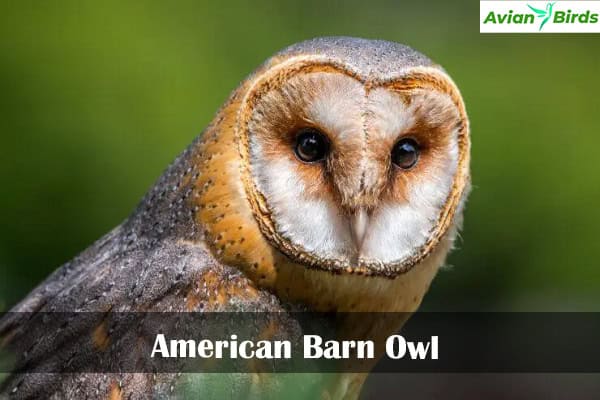
Unique Features and Adaptations
This owl has amazing hearing and sight, perfect for hunting in the dark. It can fly silently and has feathers that help it sneak up on prey.
Nesting and Breeding Habits
Barn Owls mate for life, with the male choosing where they live. They nest in places like hollow trees or old buildings. They can have up to six eggs at a time. The female sits on the eggs, and the male brings food.
Diet and Hunting Strategies
American Barn Owls eat small mammals like voles and mice. They use their great hearing to find prey, flying low to catch it. Their silent flight and sharp talons make them great hunters at night.
These owls were less common in Wisconsin in the past but are showing signs of recovery. In 2020, a nest was found in the state for the first time in over 20 years. This gives hope for their future.
| Fact | Value |
|---|---|
| Global Rank | G5 |
| State Rank | S1B |
| Breeding Range | Throughout most of the U.S. |
| Nesting Dates | mid-April to mid-August |
| Foraging | Low patrol (~1.5-4.5 meters above ground) |
| Migrant Status | Permanent resident and short-distance migrant |
| Winter Range | Low petrol (~1.5-4.5 meters above ground) |
| Habitat | Open rural lands or grasslands |
3. Barred Owl
- Scientific name – Strix varia
- Lifespan – 8 years (average)
- Size – (43 to 50 cm)
- Weight – (470 to 1050 g)
- Wingspan – (99 to 110 cm)
The barred owl lives in the eastern United States, including Wisconsin’s diverse forests. It has brown and white feathers with bars, and a unique “who cooks for you” call. Spotting this medium-sized owl is a treat.
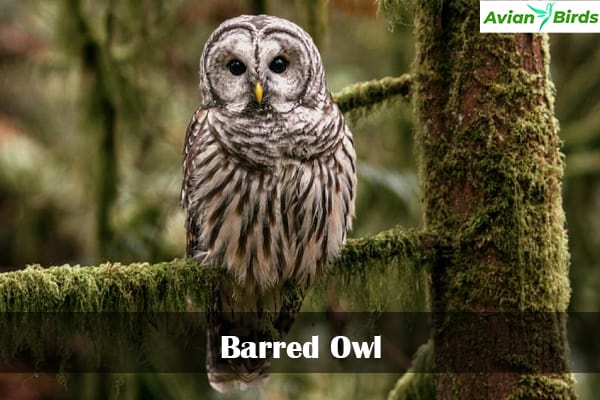
Distinctive Markings and Calls
Barred owls stand out with their mottled brown and white feathers. Their heads are round and don’t have the ear tufts of other owls. Their “who cooks for you” call is haunting and can be heard during the day.
Nesting and Breeding Behavior
These owls are monogamous and nest in tall, mature trees in deep forests. They lay two to three eggs, which hatch after four to five weeks. The young owls stay with their parents for months, learning to fly and hunt.
Hunting Techniques and Prey
Barred owls are skilled hunters, using their sharp talons and silent flight to catch small mammals, birds, fish, and amphibians. Their varied diet and hunting skills help them survive in Wisconsin’s diverse ecosystems.
Where to Spot Barred Owls in Wisconsin
In Wisconsin, barred owls are most common in the west, especially west of the Wisconsin River. Look for them near rivers, lakes, and forests with tall trees. With patience and a keen eye, you might see these fascinating birds in the wild.
4. Eastern Screech Owl
- Scientific name – Megascops asio
- Lifespan – 4 years (average)
- Size – (16 to 25 cm)
- Weight – (121 to 244 g)
- Wingspan – (48 to 61 cm)
The eastern screech owl is a small, fascinating bird found in the eastern United States, including southern Wisconsin. It has two main colors, gray and reddish-brown, which help it hide in its environment.
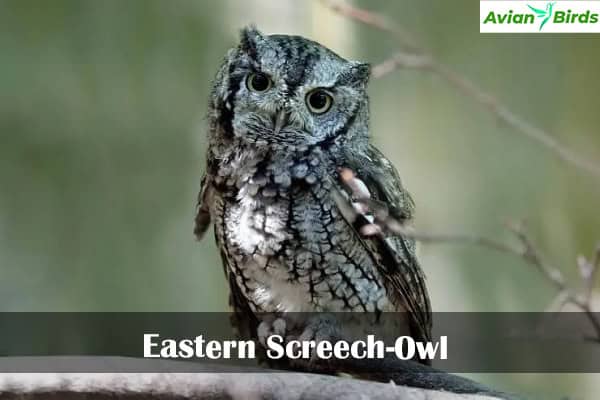
Identifying the Eastern Screech Owl
This owl is about eight inches tall and has a wingspan of 22 inches. In Wisconsin, the red phase makes up about 39% of the population, while the gray phase is more common. You can spot these owls by their unique calls at night and their round shape with ear tufts during the day.
Nesting and Breeding Habits
Eastern screech owls usually live alone but find a mate during breeding season. They breed from early March to mid-July in Wisconsin, mostly in the southeast. These owls live in tree cavities and stay with their mates for life.
Foraging and Feeding Behaviors
These owls eat mostly insects and small mammals. They hunt near forest edges, open fields, and wetlands. They hunt using different methods, like waiting in a tree or swooping down from a branch to catch prey.
Finding Eastern Screech Owls in Wisconsin
Eastern screech owls are not as common in Wisconsin as some other owls. You can find them by listening for their calls and looking for them in tree cavities during the day. Their numbers have decreased in the north since the early 1900s, with most nests in the southeast.
5. Long-eared Owl
- Scientific name – Asio otus
- Lifespan – 11 years (average)
- Size – (35 to 40 cm)
- Weight – (220 to 435 g)
- Wingspan – (90 to 100 cm)
The Long-eared Owl lives in dense forests in Wisconsin. It has tufted ears and looks like a tree bark. They make a simple hooting sound in spring but are hard to see.
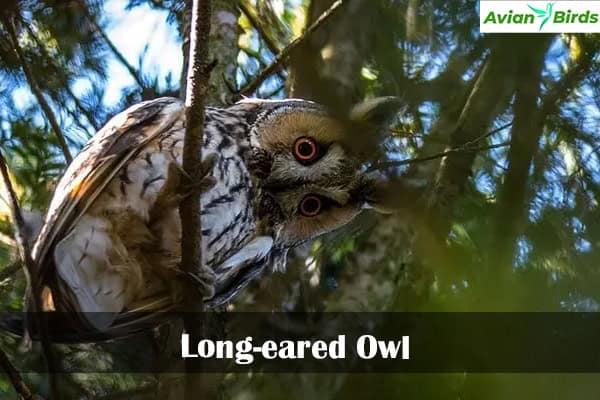
6. Great Gray Owl
- Scientific name – Strix nebulosa
- Lifespan – 13 to 27 years
- Size – (61 to 84 cm)
- Weight – (580 to 1,900 g)
- Wingspan – (142 to 152 cm)
The Great Gray Owl visits Wisconsin in winter, coming from the north for food. It has gray and white markings on its face. You might see it in fields or marshes, hunting small mammals.

7. Short-eared Owl
- Scientific name – Asio flammeus
- Lifespan – 4 years (average)
- Size – (34 to 43 cm)
- Weight – (206 to 475 g)
- Wingspan – (85 to 103 cm)
The Short-eared Owl lives in open areas like grasslands and marshes. It looks like a typical owl with a round head and short ear tufts. They hunt day and night for small rodents. Watching open areas carefully might let you see these owls.
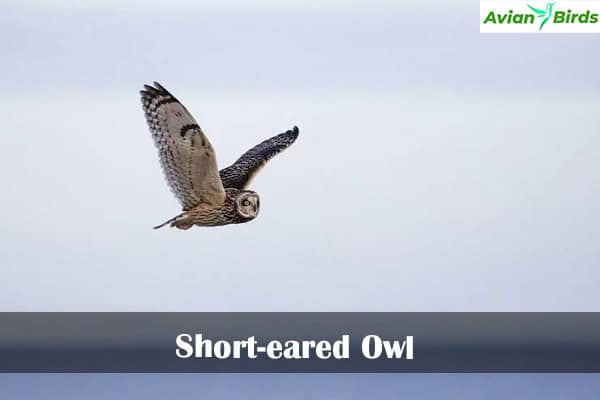
8. Northern Saw-whet Owl
- Scientific name – Aegolius acadicus
- Lifespan – 4 years (average)
- Size – (18 to 21 cm)
- Weight – (65 to 151 g)
- Wingspan – (42 to 48 cm)
The Northern Saw-whet Owl is a small, fascinating bird found in Wisconsin’s forests. They are a bit heavier than a Hairy Woodpecker. Their unique “too-too-too” call and ability to hide in dense foliage make them hard to see.
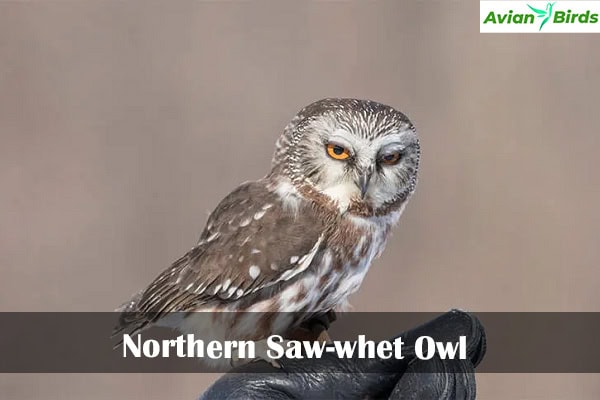
These owls have a mottled brown look, a whitish facial disk, and a white-spotted head. Young owls have a dark brown coat with a creamy yellow breast and belly. They spend the day roosting in evergreen trees, staying hidden until nightfall when they hunt.
Not often seen breeding in Wisconsin, the Northern Saw-whet Owl might show up during migration or irruption years. The first Wisconsin Breeding Bird Atlas found 73 records over five years. The second Atlas found a few breeding pairs, mostly in the north.
They like dense woodlands, hunting small mammals like deer mice, and chipmunks. Their love for dense habitats makes the northern saw-whet owl in Wisconsin a rare sight but worth the effort to see.
Willow, a rescued female saw-whet owl in Wisconsin, is a story of resilience. Found in Shorewood, Wisconsin, after a collision, she lost her flying ability due to a severe wing injury. Now at the Raptor Program, she teaches us about raptor conservation.
9. Snowy Owl
- Scientific name – Bubo scandiacus
- Lifespan – 10 years (average)
- Size – (52 to 71 cm)
- Weight – (1600 to 2950 g)
- Wingspan – (126 to 145 cm)
The snowy owl is a stunning, all-white bird that rarely appears in Wisconsin’s skies. These big owls weigh between 3 to 6 pounds, making them the heaviest North American owl species. Their white feathers and a wingspan of 4 to 5 feet make them a sight to see.
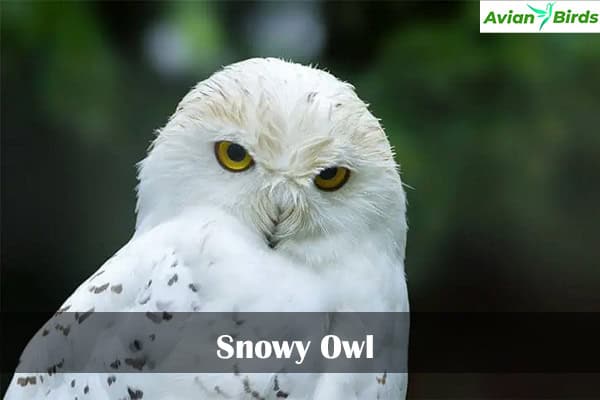
Appearance and Adaptations
Snowy owls are well-suited for the harsh Arctic tundra. Their thick feathers and sharp claws help them survive in extreme cold. They hunt small mammals and birds with their sharp eyesight and silent flight.
Migration and Range
Snowy owls live mainly in the Canadian Arctic but move south in winter. In Wisconsin, their sightings vary a lot from year to year. Their numbers depend on the availability of their main food, lemmings, in their breeding grounds.
Hunting Strategies and Diet
Snowy owls hunt during the day, especially at dawn and dusk. They use different hunting methods, like perching high and watching for prey. In Wisconsin, they eat small rodents, waterbirds, rabbits, and other small mammals.
While exploring Wisconsin’s nature, look out for these amazing birds. With luck and patience, you might see a snowy owl in its winter beauty.
10. Northern Hawk Owl
- Scientific name – Surnia ulula
- Lifespan – 10 years (average)
- Size – (36 to 45 cm)
- Weight – (240 – 454 g)
- Wingspan – (78 to 88 cm)
The Northern Hawk Owl is a special bird found in Wisconsin’s north. It looks like both owls and hawks. It has a long tail and a small beak, like a hawk, but also has owl-like facial discs and can fly silently.
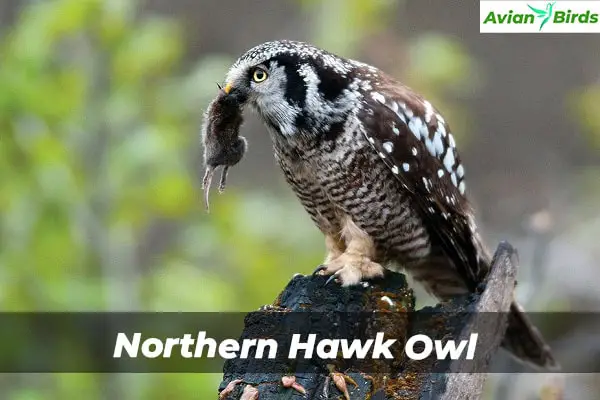
Unique Characteristics
This owl is bigger than the Boreal Owl but smaller than the Great Horned Owl. It has feathers on its legs and feet, and a long tail. Its dark face markings make it stand out from other owls.
Habitat and Nesting
These owls like open forests near marshes and open areas. They often sit on tall trees. They nest in tree holes, old nests, or broken tree tops, using the varied habitats of the northern Hawk Owl Wisconsin area.
Prey and Hunting Behavior
The northern hawk owl hunts during the day, eating small mammals and birds. It is known for its amazing flying skills as it chases its prey. Its hunting ways and adaptations make it a fascinating bird to watch in the Hawk Owl Wisconsin area.
Seeing a northern hawk owl in Wisconsin is rare, but bird lovers might spot them in winter near the Great Lakes. With patience and a sharp eye, you might see this amazing bird in the wild.
Check Our Previous Articles:
11. Boreal Owl
- Scientific name – Aegolius funereus
- Lifespan – 16 years (maximum recorded)
- Size – (22 to 27 cm)
- Weight – (131 to 179 g)
- Wingspan – (50 to 62 cm)
Wisconsin is home to many owl species, but the Boreal Owl is rare here. These small owls are a treat for birdwatchers and nature lovers. They stand out with their unique looks.
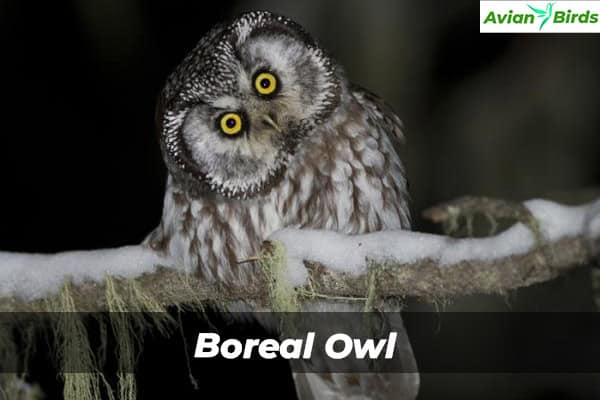
Identification and Description
The Boreal Owl has a light underside with brown stripes. Its back and wings are brown with white spots, and its eyes shine bright yellow. They are smaller than other owls, about 8 to 11 inches tall, with a wingspan of up to 2 feet.
Range and Distribution in Wisconsin
Boreal Owls live in the boreal forests of northern North America. They are found in parts of Canada and the western United States. Rarely, they can be seen in Wisconsin’s northern forests.
Diet and Hunting Methods
These owls mainly eat small rodents, birds, and insects. They use their sharp eyesight and silent flight to catch prey. They hunt using different strategies to find and catch food.
The Boreal Owl is rare in Wisconsin, but it shows how rich the state’s nature is. Birdwatchers and nature lovers should report seeing these owls or other rare birds to the Department of Natural Resources (DNR). This helps with conservation efforts.
Wrapping Up…
Wisconsin’s owl population shows the state’s rich natural heritage. From the majestic Great Horned Owl to the elusive Boreal Owl, these birds are key to the state’s ecosystems. Learning about Wisconsin owls helps us appreciate their importance in owls in Wisconsin.
Exploring owl species in Wisconsin shows they’re more than just interesting birds. They are crucial to Wisconsin’s wildlife. By respecting their role in nature, we help protect these birds for the future.
If you love birds, nature, or just the outdoors, Wisconsin’s owls will amaze you. By watching, learning, and valuing these raptors, you open a door to a world of beauty and adventure. Discover the wonders of these birds in your own backyard.

